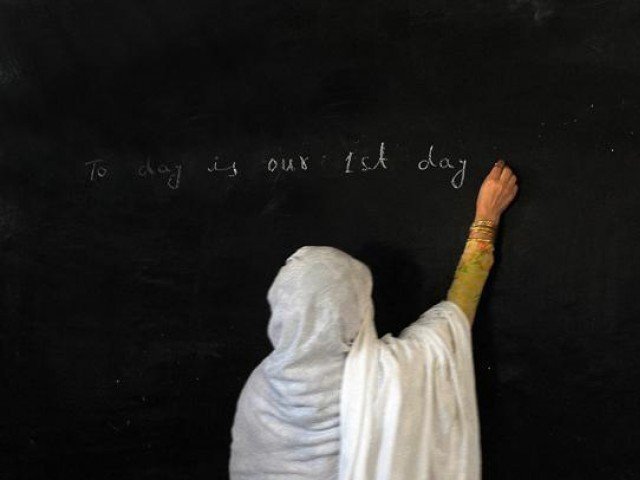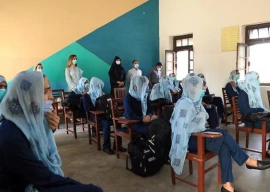
Just a decade ago, in the Mohmand tribal district of Khyber-Pakhtunkhwa, the government initiated several awareness campaigns to persuade parents to send their girls to schools.
Unfortunately, these efforts faced limited success as tribal traditions and customs proved to be significant obstacles, despite incentives such as offering food packages to families for each girl enrolled in school.
At that time, tribal elders and religious scholars played a pivotal role in discouraging girls’ education. However, in a noteworthy transformation, tribesmen have now taken to the streets, protesting against the lack of teachers, proper school buildings, and essential facilities in girls’ schools.
The demand is explicit: they seek the appointment of more female teachers in the remote areas of Mohmand to ensure quality education for their girls. Regrettably, the government has been unable to meet these demands effectively.
This challenging situation has led girl students to stage protests outside their school buildings, bringing attention to the insufficient number of teachers. Social media has become their primary tool, with images and videos shared online and subsequently picked up by mainstream media.
Read FDE grants time scale promotion to teachers
In Tehsil Ambar of Mohmand district, with a population of 62,109 according to the 2017 census, the Otman Khel sub-clan of Mohmands faces challenges despite the region’s mineral wealth and agricultural opportunities. Locals frequently protest the lack of facilities, particularly the scarcity of female teachers.
Luqman, a resident, lamented the presence of only two schools—primary and middle—in the entire tehsil, with teachers often neglecting their responsibilities.
Efforts to engage education officials and the district administration proved futile, leading to a grassroots protest documented on social media.
This garnered the attention of mainstream media, compelling the education department to promptly appoint two female teachers.
While tribal Jirgas once vehemently opposed girls’ education, recent events indicate a shift in perception.
Read The teachers we need for the society we want
A Jirga in Tehsil Hamlimzai’s village Shah Baig expressed deep concern over the absence of educational institutes in 12 villages, highlighting the government’s failure to meet repeated demands. The elders noted the lack of local girls’ schools, emphasizing the pressing need for education facilities.
In Safi’s Shawa Farsh, the scarcity of teachers remains a critical issue, with only one teacher for 200 girls. Parents lamented that locally recruited teachers are often transferred elsewhere due to the influence of influential individuals.
District Education Officer Mohmand, Zubaida Khattak, acknowledged the shortage of female teachers and expressed commitment to addressing the challenge.
The stark reality is that just having natural resources and an agricultural base has failed to improve the lives of the majority of the residents.
Tribesmen, who were once at the forefront of opposing girls’ education, are now demanding more educational opportunities for their daughters. It’s a poignant testament to the evolving dynamics in the region, where the struggle for education has shifted from convincing parents to send their girls to school to addressing systemic issues of teacher shortages and inadequate facilities.
Published in The Express Tribune, January 15th, 2024


1732071267-0/lana-(2)1732071267-0-165x106.webp)
1727242355-0/Diddy-(1)1727242355-0-165x106.webp)

1732063440-0/elon-(3)1732063440-0-165x106.webp)
















COMMENTS
Comments are moderated and generally will be posted if they are on-topic and not abusive.
For more information, please see our Comments FAQ